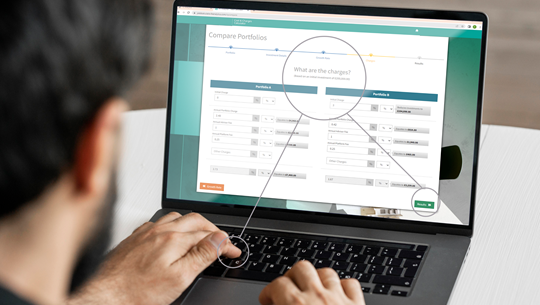It goes without saying that investments should only be recommended to, or included in discretionary portfolios of, clients whose needs, characteristics and objectives they meet. MiFID II has formalised this obligation by requiring advisers, platforms and DFMs (collectively referred to as distributors) to consider matching any funds or products with target markets based on given criteria.
To ensure consistency between distributors and product providers, MiFID II says the starting point should be the target market identified by the provider’s product governance process, which distributors should then fine-tune to reflect their own client base. Product providers rarely have direct contact with clients, so their target market definitions can only be generic; distributors know their clients and must decide which products they recommend to which individual clients.
It is important to remember that the obligation under MiFID II to ensure that funds are only available to the right clients ultimately rests with distributors.
The European MiFID Template (EMT)
The EMT was developed to standardise the categorisation of the target market and to enable distributors to search for funds based on the providers’ generic target market. The target market is divided into five client categories and the distribution strategy, with the options for UK distribution as follows:
Investor type – Retail, Professional, Eligible counterparty
Knowledge and/or experience – Basic, Informed, Advanced
Ability to bear loss – No capital loss, Limited capital loss, No capital guarantee, Loss beyond capital
Risk tolerance –The PRIIPs KID SRI, UCITS KIID SRRI or High/Medium/Low for products with no KIID or KID
Client objectives and needs – Preservation, Growth, Income, Hedging, Option or leveraged return, Other, Specific investment need (eg Sharia, ESG, Green), together with the investment time horizon
Distribution strategy – Execution only, Non-advised with appropriateness test, With investment advice, Portfolio management
To help you understand the output of the EMT correctly, the guidance from the European Working Group (EWG), which compiled the template, includes the following:
- The categories should be read from the client’s point of view, rather than the fund’s, eg an income fund is also likely to be shown as Yes for clients with a ‘Growth’ objective.
- Most characteristics may be divided by product providers into Yes (clients with characteristics for whom the product has been designed), Neutral (clients for whom it may be applicable in certain circumstances, for example as part of a diversified portfolio) or No (clients for whom it is unlikely ever to be applicable, such as an equity fund for a client unable to accept any capital loss).
- Some characteristics are hierarchical. A product that is shown as Yes for ‘Retail’, ‘Basic’ or ‘No capital loss’ are very likely to be Yes for all other clients in that category. Similarly, a client with a high risk tolerance may also invest in a product with a lower risk rating.
- The ‘Ability to bear loss’ category is critical and has caused more confusion than any other. The EWG guidance is that only those products with 100% capital guarantee should be Yes for ‘No capital loss’; this doesn’t include money market funds without a capital guarantee, where the ongoing charges could exceed the return. ‘Limited capital loss’ should only apply to products for clients who require a specified maximum capital loss percentage, not low volatility funds or targeted return funds with no capital protection; if a product is shown as Yes in this field, it should also state the maximum capital loss level.
Target market feedback
With the characteristics divided into Yes, No and Neutral, this translates into the target market being divided into ‘positive’, ‘negative’ and a grey area between the two. Ideally, only those clients in the positive target market – their profiles match the Yes characteristics in every category – would ever invest in any product.
However, as funds may form part of a diversified portfolio, whether advised or discretionary, it may be perfectly valid for a product to be recommended to a client classed as Neutral. But it is not expected that any client would invest in a product for which they are in the negative target market.
Fortunately, non-complex products, which includes all UCITS funds (and, in the UK, most investment trusts and NURS funds) may be sold to any investor with any level of knowledge or experience through any distribution strategy, including execution only. They are, therefore, unlikely to have a negative target market, apart from clients with no or limited capacity for capital loss.
In the unlikely event that a product is sold to a client in the negative target market, this must be reported back to the provider, ideally using the European Feedback Template (EFT) when it has been agreed exactly how this will work. Product providers can then apply this feedback to their product governance process and update their target market or their product promotion, as applicable.


